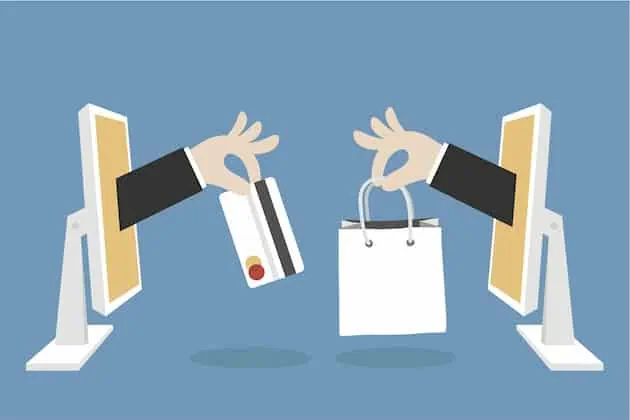More and more businesses are buying both goods and services online. Often conducted through marketplaces, B2B eCommerce has been growing steadily over the past couple of years. The current trends exhibited in the B2B eCommerce space weren’t merely accelerated by the pandemic, they are a direct result of it. With the acceleration comes the completion and therefore it is important to know the perfect B2B eCommerce strategies in 2024.
Today, B2B eCommerce accounts for nearly $15 trillion in sales worldwide. That number is five times larger than B2C eCommerce sales, according to Statista, a provider of consumer and market research.
B2B eCommerce is a very minuscule portion of overall B2B sales, however, sales volume in the industry is expected to hit $1.8 trillion by 2023. By that time, B2B eCommerce is expected to account for 17% of all B2B sales, according to Forrester, business research and advisory firm.
Currently, Asia makes up 80% of all B2B eCommerce worldwide. However, the world is shifting to deglobalization, resulting in most commerce and supply chain routes being redrawn to friendlier locals. More and more analysts predict that gone are days of rampant globalization over the last thirty years.
Now trade is becoming polarized and regional, splitting the world into siloed trading blocks transacting primarily within themselves. So a strong and precise B2B eCommerce strategies are required to target the right audience and get more profits.
The reworking of NAFTA a few years ago by former President Donald Trump may have paved a way for either trade channels closer to home, or the outright onshoring of it. Although there is a cause of concern from a geopolitical perspective, this is likely to benefit B2B eCommerce within the US and the North American region overall.
Merchants preparing themselves with a strategic plan to capitalize on these seismic paradigm shifts will benefit immensely from these changes for years to come. In this article, we look at what B2B eCommerce is, how it is different from B2C eCommerce, and why merchants may need specific B2B eCommerce strategies to effectively operate in the B2B eCommerce industry.
We also explore the various types of B2B eCommerce businesses that exist, the benefits of operating as a B2B eCommerce company, the current trends employed within the industry, and the appropriate strategies to take advantage of these trends.
What is B2B eCommerce?

B2B eCommerce is the selling of goods or services, or both, between two business entities, via the internet.
B2B eCommerce transaction can be a small company ordering office supplies online from staples. It could also be a large enterprise setting up hybrid cloud storage and deploying Amazon’s AWS or Microsoft Azure cloud services. It can also be a merchant procuring payment solutions from Host Merchant Services. All are perfect examples of B2B eCommerce and each of them requires different B2B eCommerce strategies for success.
How is B2B eCommerce different from B2C eCommerce?
B2B eCommerce deals with a business selling to other businesses, whereas B2C is a business selling their goods to consumers. B2B transactions can consist of transactions that are low in unit volume and high in dollar value. The transactions overall are large in size and traditionally include customized rates, often a result of ongoing relationship management between the vendor and customer.
Even if the scenario is reversed, the volume sales are high and individual unit cost is low, the result is still the same, a large bulk order with a high overall transaction value.
Alternatively, for B2C transactions, each individual transaction is lower in value in comparison to an average B2B transaction, mainly due to the fact that both the number of units and the unit costs are low. Even if an individual were to buy in bulk, the quantity wouldn’t match that of a business making that purchase. If the unit cost of an item is high, its usually at lower quantities, one-two at maximum.
Benefits of B2B eCommerce
There are numerous benefits of B2B eCommerce. The benefits that apply to one business may not apply to another, and some business may realize numerous benefits for offering B2B eCommerce while others operating in a niche subsection of the business may have only a single benefit that may make the entire prospect very lucrative for them. Some examples are;
Easily Cross-sell or upsell additional products or services to current clients – many companies now offer a type of marketplace landing page on their website listing their entire suite of services or goods, highlighting their key feature and the personas that may drive the most value from that offering. It is a quick and intuitive way to showcase all a business has to offer and start a conversation.
Scale and Reach – using the earlier example of marketplace, it is much easier for businesses to simply showcase their products on a marketplace than it would be by marketing individual products by drafting email campaigns and targeting specific groups.
B2B eCommerce is likely to expand its reach to all customers, even low-touch clients who may not realize how effective and useful certain company offerings maybe until there are readily available in front of them.
Productivity – gains in efficiency and productivity are another great benefit of B2B eCommerce. Businesses effectively outreach clients by guiding them to buy specific goods or services online. That is much more efficient and cost-effective than the catalogs businesses used to send out to clients to showcase their product lines.
Types of B2B eCommerce Businesses
Below are some examples of B2B eCommerce businesses.
Wholesaler – a wholesale business buys items in bulk to then sell in smaller quantities to retail businesses. Given the size of the order, the wholesaler may buy directly from the manufacturer or from a distributor. As a B2B eCommerce business, wholesalers can supply directly to the retail business, such as is the case for restaurants or a grocery stores. It can even supply directly to the consumer, as many did during CoVID-19. B2B eCommerce allows businesses to be agile. The wholesaler reduces the minimum order size, the consumer purchases quantities they would need for a few months at once, and you have a lifeline during a pandemic.
Manufacturer – this is the business that produces the goods. They don’t sell in small quantities and look to ship their items regionally through distributors who purchase their goods at massive quantities. Although traditionally manufacturers have operated offline working off relationships in place for decades, the adoption of B2B eCommerce has been high among them. B2B eCommerce offers them efficiency in the supply chain and the potential to build additional relationships with large wholesalers while possibly expand margins.
Distributor – This is the middleman between the wholesaler and the manufacturer. Distributors manage both the up-chain and down-chain relationships. They have a huge infrastructure for both inventory management and distribution logistics, along with sales and marketing advisory services to help smaller businesses expand. Although distributors shun the nuisances of dealing with individual price negotiations, payment structures with multiple price points that are part and parcel of small-scale purchasing, they do prefer the productivity gains and potential cost savings available from digitizing their workflows by adopting B2B eCommerce.
Trends in B2B eCommerce?
Payments – This is an area of great significance as well as one that is in tremendous transition from new entrants into the industry. There has also been a lot of shifts in the type of payments clients adopt. Although cryptocurrency is not the credibly transactable currency that many had hoped it would be, there are many other options that have been adopted over the past few years.
Numerous payment service providers, both traditional payment processors and new technology entrants have introduced consumers to new means of paying. Google, Apple, Facebook, and Samsung are all technology companies. However, they have their own Payments feature, take a name and add ‘Pay’ to it.
They’re leveraging the trust and reach of their ubiquitous operating system, device, or social platform to offer one more service for an added layer of stickiness to their product, and potentially new revenue streams. Technology companies utilizing their tech expertise to advance in payments have a moniker, FinTech. The result has been phones, their apps, and even watches that are now used in lieu of cash.
Major payment platforms are racing to either build or acquire technologies that will house all these payment solutions into one app or software, known as integrated payments. This trend is likely to have a profound impact in increasing the adoption rate of B2B eCommerce. Businesses may or may not have a Venmo, they’ll certainly have a corporate credit card and a checking account. As such, businesses are likely to have the merchant save their corporate card on file and pay with the ACH payments mechanism linked to their bank account. Businesses will look for both of these solutions among others simultaneously available in an integrated environment.
Convenience and ease of transacting – another trend driving adoption of eCommerce overall, and likely to do so for B2B eCommerce is the ease and convenience with which a transaction settles. According to the Amex Digital Trendex 2021 Digital Payments Edition report, of those surveyed regarding what influenced them to adoption the payment methods they choose to use, 73 percent responded that convenience offered was the biggest determinant.
Yes, in B2B eCommerce you’re dealing with a business entity, but there is an actual human making the purchase. Despite the higher threshold for security around payments and transactions than typical B2C transactions, the human element of the interaction is likely to compel the purchaser to seek out speed, convenience and ease in transacting.
Buy Now Pay Later – This is a new payments option that have seen mass adoption across all consumer types for all types of products. According to a McKinsey survey, thirty percent of those surveyed had used the payment option to either expand what they could buy or to be able make the purchase to begin with. Those trends haven’t subsided, global BNPL market is expected to grow to nearly $600 billion, up from last year’s $120 billion.
However, the trends have shifted towards B2B eCommerce, and away from B2C solutions. The poster child for B2C BNPL, Klarna, which was valued at $46 billion in 2021, is trying to raise funding via a round valuing the firm at only $15 billion, according to the Wall Street Journal. Surprisingly, it is now B2B BNPL that is surging. Venture capitalists are funding round after round for BNPL companies that are catering to businesses rather than consumers.
B2B eCommerce Stategies

Appealing Website – One of the best ways for an effective B2B eCommerce site launch is to have a website. It is important to understand the design aesthetics as well as the quality of the content on the site. Another aspect is multichannel delivery solutions for the B2B eCommerce solution offered. Along with the website, this should include an App or a mobile-friendly website.
The marketplace example cited often in this article is another great example of a good site. Not that we are saying businesses need to start marketplace platforms for their B2B eCommerce but instead consider utilizing those platforms to showcase quickly and seamlessly all you can offer other businesses and what pain points your product alleviates, and for which type of businesses.
Payment Options – effectively addressing payment solutions for your B2B eCommerce business is like hitting two or three birds (at least) with one stone. The payments industry wasn’t known for best customer experience. However, with information traveling at the speed of light with the internet and social media, those dynamics have changed.
With that customer-centric focus in mind, payments is not simply the option of checks or corporate cards. Businesses must have the ability to accept numerous payment types at once. This will include the traditional credit cards but may also include ACH transactions. Real time payments with the FedNow program can also be a solution. Any one of the large buy now pay later firms catering to businesses, such as ScalaPay, Billie, Playter, and Hokodo, may also need to be integrated into payments ecosystem. For optimal customer experience, businesses demand of convenience will have to be met. Merchants need to ensure that they can conform to payment methods by which the customer wants to pay, it is no longer the other way around.
Many of the large platforms have already launched integrated payments systems to offer as a service for their seller community. Salesforce, Shopify, and Automattic, the parent company of WordPress and WooCommerce, have already begun to introduce their version of ‘Pay’ integrating multiple payments mechanisms into a single SaaS environment, so that the payee does not exit the platform to process the payment.
Banks are also starting to come around and have started to offer additional services such as cryptocurrency custodian services, and BNPL solutions.
Conclusion
One-third of all B2B professionals in the US believe that eCommerce is the most effective channel for the sales lifecycle. That statistic underscores how outdated the old model is where in-person old-fashioned relationship building ruled sales for decades. B2B eCommerce is quickly being adopted worldwide and is expected to take a larger market share of the overall B2B sales segment.
As big of gains as the B2C eCommerce industry has experienced over the past decade, especially in the last two years, expected to surpass $1 trillion in sales in just the US in 2022, B2B eCommerce is five times the size globally. Suddenly, the narrative has shifted towards B2B, with recent funding rounds for firms catering to B2B eCommerce industry reaching exuberant levels, just within the past couple of months. Venture capital firms such as Greylock feel that is only a matter of time that B2B firms mass-adopt digitization of operations, transactions, and payments. As a result, they are actively seeking to fund founders at the intersection of B2B eCommerce.
News has been mainly focused on the B2C story and how that has grown over the years, particularly during the pandemic. What has been underreported is that B2B eCommerce was almost nonexistent as most B2B sales were conducted offline. This all had to change overnight during the pandemic. After a near-standstill and shutdown of business operations, and life in general, companies had to adopt to need a surge in demand from consumers who were locked away at home and could only order online. Businesses were no different, they too had to shift their purchasing habits to contactless to continue operating, a trend that has turned out to be more pervasive that it was for B2C eCommerce.
From a global trade and commerce perspective, many geopolitical analysts and journalists foresee an end to the world order that permeated over the last three decades. The new order is a set of two or three global changes which will force businesses and countries to redraw supply chains and logistical routes, bringing in production hubs closer to home, spawning demand for B2B eCommerce vendors and platforms locally.
These changes are likely to present many opportunities and merchants develop the appropriate strategies now to benefit from these changes in the B2B sales environment. It is important for all businesses looking to offer B2B eCommerce services to understand the various strategies that can best benefit their specific niche, and the current trends that exist. Most of all, merchants should either be familiar with the nuances of payments systems and the latest trends to cater to B2B eCommerce or partner with a merchant service provider which is.

